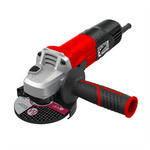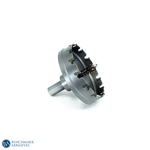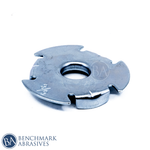
How To Cut Pavers With An Angle Grinder

If you wish to cut through cement pavers when remodeling your driveway, walkway, or home's floors, you will eventually require an angle grinder.
With other cutting tools, it would be difficult to cut these stone blocks, but if you take the right precautions, an angle grinder can handle the task. In light of this, you will go into depth about the following procedures to do the task correctly the first time.
How To Cut Pavers With An Angle Grinder
When you are prepared to begin your work, you must take specific actions to guarantee that the project is completed correctly and that you are safeguarded from harm. Here is a detailed list of actions that you can take to ensure your safety while completing the task.
Step 1: Obtain Your Equipment
Before you begin working, you must put on all your safety equipment. If you are using any power tools, you shouldn't skip this step, as it is one of the most significant. Gloves, a hard hat, safety glasses, and earplugs are also recommended. You might also use noise-canceling headphones as an alternative.
Step 2: Choose The Correct Angle Grinder
Angle grinders come in various diameters and are made for various tasks. Therefore, it's critical to understand the size you'll need for the task at hand. Use a smaller size that doesn't cut as deeply, such as a 4-1/2-inch one, if you're working with smaller bricks. To ensure it can cut as deeply as you need, use the larger one when installing large block pavers.
Step 3: Select Your Disc
The blade that cuts through concrete pavers is the disc. Therefore, you need to ensure that your disc is both sturdy and of high quality. Like the less expensive ones, you don't want it to break after only a few uses. Diamond discs are the strongest and most durable alternative, so choosing them is the wisest course of action.
Related Article: How to Cut Concrete Pavers
Step 4: Mark The Cut Line
For this step, you'll need a pencil or some chalk nearby. Mark the location of the paver's cut before you begin removing anything. To cut in a straight line, you will follow this line while cutting. Draw the line where you need to cut with a pencil or chalk. When chopping the paver, remain as near that line as you can.
Step 5: Prepare Your Paver For Cutting
The paver must be positioned on a flat surface with the end dangling over the edge and the newly marked line facing up. Place the paver on the surface of your workbench with the line you will cut extending just past the edge of the table if you have one. If you don't have a suitable surface, you can lean the paver against a scrap piece of wood with the rope dangling over the edge.
Step 6: Carry Out The Cut
Now that your materials are ready for cutting, you may begin the cutting procedure using an angle grinder. To ensure that the paver stays set and doesn't move out of place, place one hand on the back end of it first. Learn how to angle the grinder up to the designated line and cut the line with the paver. You can move down the line.
When you reach the end, the cut portion of the paver will collapse, leaving you with the correct-sized paver. Depending on how thick the paver is, you might need to repeat the cut from the opposite side.
Tips and Tricks to Cut Pavers with an Angle Grinder
You should be aware of various errors if this is your first time using an angle grinder to cut pavers. This will ensure you don't make them and your job runs more smoothly.
The first is that you shouldn't cut with downward pressure. With a saw, this will work; however, if you do it with an angle grinder, the tool can fly backward in your way. This is risky and can be prevented by allowing the instrument to do its task. Also, be careful to secure the tool safety guard if you have one. If your hands approach the blade too closely, this will shield them.
Consider a wet saw for precise cuts and large projects. Wet saws are highly effective and safe as they use water to cool down the blades and minimize dust.
Also, if you are a beginner, consider practicing on the scrape pavers to get an understanding of your grinder. By doing this, you can also try different techniques to enhance performance.
Safety Measures while cutting the pavers
Consider the following safety measures while cutting the pavers with an angle grinder:
-
Be sure to wear protective gear before cutting the pavers using an angle grinder. Safety gears help minimize the risks to operators as well as the pavers you are cutting.
-
Always ensure that the pavers are clamped safely before working, as this will reduce movement during the cutting process and produce more accurate results.
-
Always use diamond blades for cutting pavers to get optimal results, as diamond blades are made to cut masonry materials.
CONCLUSION
An angle grinder is frequently the most effective instrument for cutting pavers, as discussed in the introduction. It is easy to use, portable, and reasonably priced. It is also one of the safer solutions if the appropriate safety measures are taken.



































































